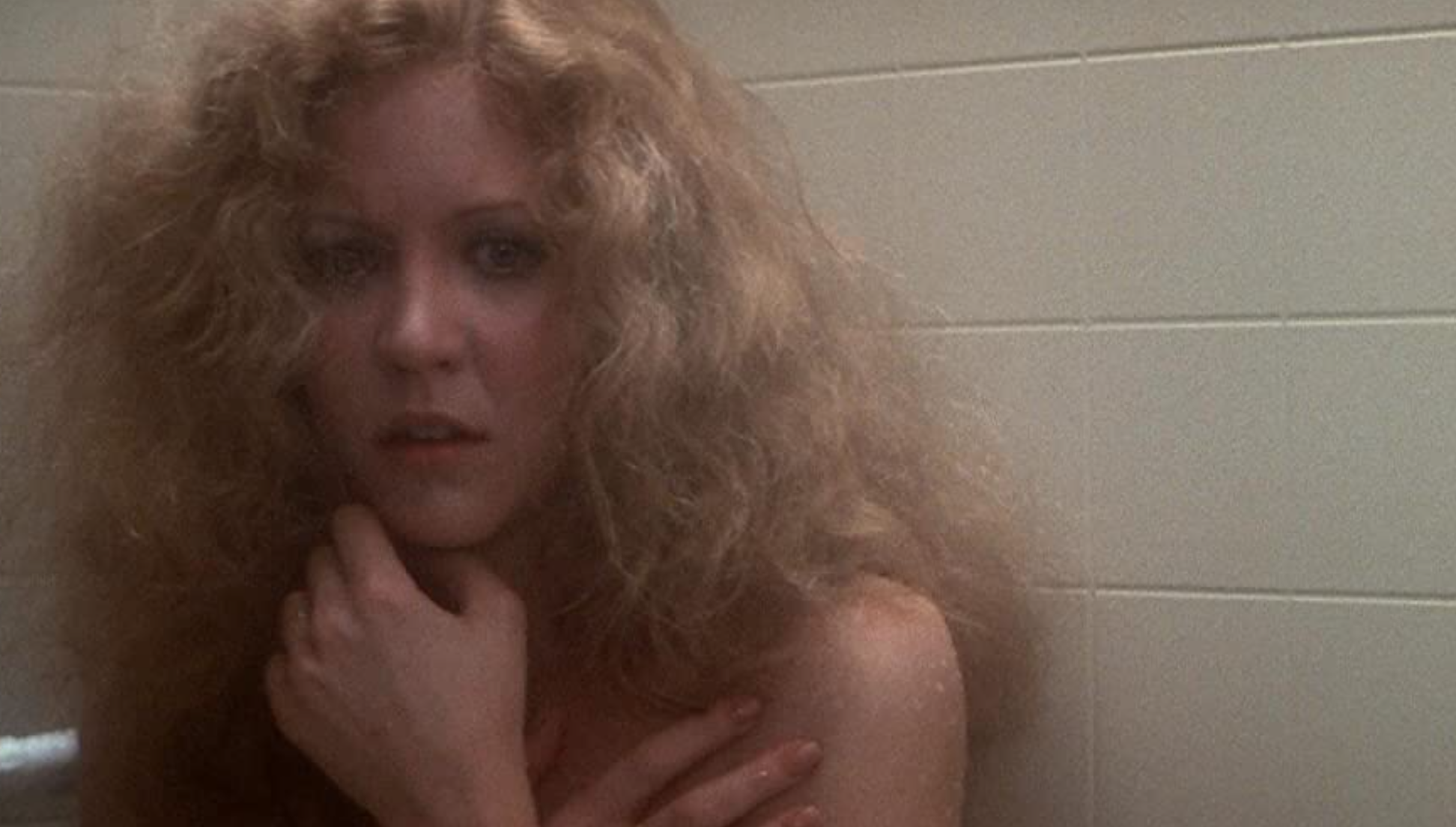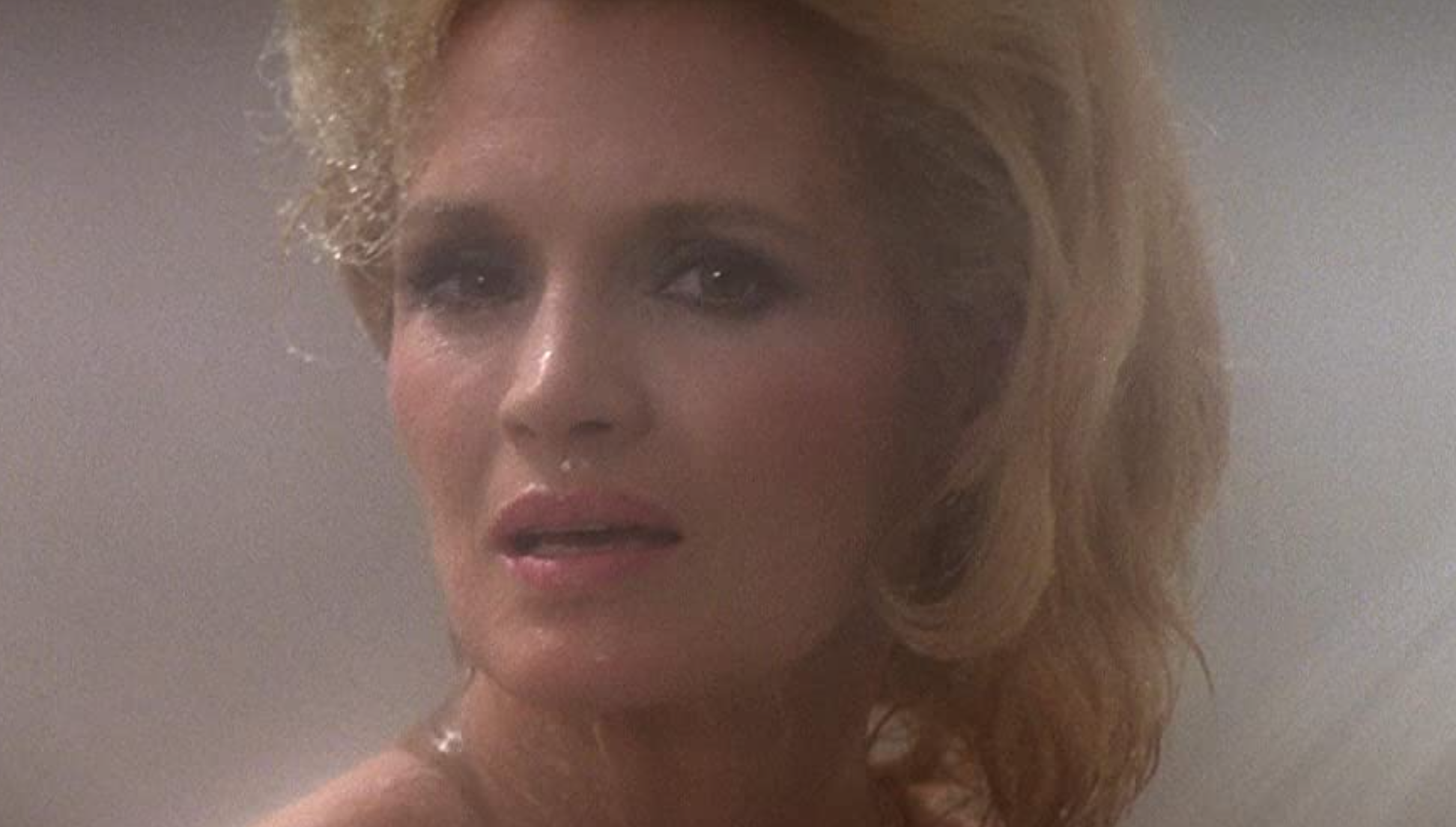By Isobel Edwards, Third Year, English
Throughout February, Bristol’s Watershed hosted a season entitled ‘Reflections and Refractions: Gender on Screen’ in which Dir. Brian De Palma’s Dressed to Kill (1980) made its disturbing yet poignant appearance. The event was organised by writer and producer Harriet Taylor who introduced the film ambiguously (so as to not spoil the forthcoming whodunnit) as ‘one hell of a ride’; and a ride it was, one that I feel I have not been able to disembark from as the feelings of unease and discomfort that this film has left with me have remained, and not because of its canonical prominence as a psychological thriller.

Set in 1980s New York, Dressed to Kill (1980) immediately plunges its audience into a world of excess, making housewife Kate Miller’s feelings of sexual unfulfillment all the more apparent. De Palma grabs his audience’s attention by the jugular as the opening scene entails a visual depiction of Kate’s masturbatory, erotic fantasy in which she is sexually assaulted in her shower.
This is an an overt homage to Hitchcock’s Psycho (1960) but with a sadomasochistic twist and it can be argued that the entire film is a poorly-executed, hyper-sexual adaptation. De Palma reasserts himself as a Hitchcock-wannabe further throughout the film and this is made painstakingly obvious as, apparently, only one scene where a woman is attacked in her shower simply isn’t enough.

This dark presentation of repressed female sexuality, undeniably constructed within the depths of the masculine imagination, forces its audience to enter an uncomfortable space where erotic pleasure is synonymous with violence and degradation. I cannot ignore the palpable misogyny that must have lurked in the shadows behind De Palma’s decision to intertwine violence and sex so heavily.
However, as a member of a modern audience that possesses an enhanced understanding and social awareness of the BDSM culture and community, I choose to re-signify this portrayal as a product of female sexual autonomy and I do so with the awareness that this probably was not De Palma’s intention at the time.
With that said, in Dressed to Kill (1980) one must be careful what they wish for. Bored and sexually isolated, Kate desires rough and dangerous sex and De Palma ensures her wishes are granted. After facing rejection from her psychiatrist (Michael Caine), Mrs Miller retreats to an art gallery where she follows a silent stranger into a taxi cab and succumbs to an adulterous one-night stand. Unfortunately, in De Palma’s cinematic world where murder is an erotic triumph, to be a woman who possesses sexual agency is to receive a narrative destiny for brutalised punishment.

Kate leaves the stranger’s apartment in a panicked rush after learning that he has contracted a venereal disease (punishment number one). However, upon her return to the apartment to retrieve a forgotten wedding ring (the symbolism speaks for itself), she is graphically slashed to death by a blonde woman brandishing a glinting razor. Because what misogynistic film writer wouldn’t kill off their sexually liberal leading lady?
The murder is witnessed by prostitute Liz Blake (Nancy Allen) who, to clear her name (whilst delivering the most emotionally flat cinematic performance I have ever witnessed), forms an unlikely team with Kate’s tech-whizz, vengeance-driven teenage son Peter (Keith Gordon) as they attempt to identify and apprehend the killer.
If Dressed to Kill (1980) is to receive any praise, that commendation strictly lies in the titillating cat-and-mouse chase that is accompanied by De Palma’s stylish cinematic prowess. Lurid spectacles of colour, gore, shining murder weapons and '80s blonde blow-outs undeniably catch the eye and Pino Donaggio’s sultry and screeching strings raise anxiety.

However, I must assert the film’s content and its representation of gender identity is unarguably distasteful and extremely harmful. So as not to spoil, I will simply say that De Palma’s obsession with duality overextends itself to insulting measures. The conservative undertones of the film inhibit the ability to enjoy it.
De Palma’s script degrades itself in its conformity to such stringent gender binaries and stereotypes that the audience’s only reaction was to laugh in mockery at this shabby attempt at a psycho-thriller. Revered as a ‘master of the macabre’, De Palma certainly fails to master the art of a progressive horror and consequently cheapens the cinematic experience he creates.
If there is any merit in re-visiting the antiquated Dressed to Kill (1980), it is in the reminder of how far our discourse and ability to represent gender identity has evolved from this disillusioned period of cinema.
Featured Image: MGM and IMDB
Have you seen this '80s psychological thriller?









